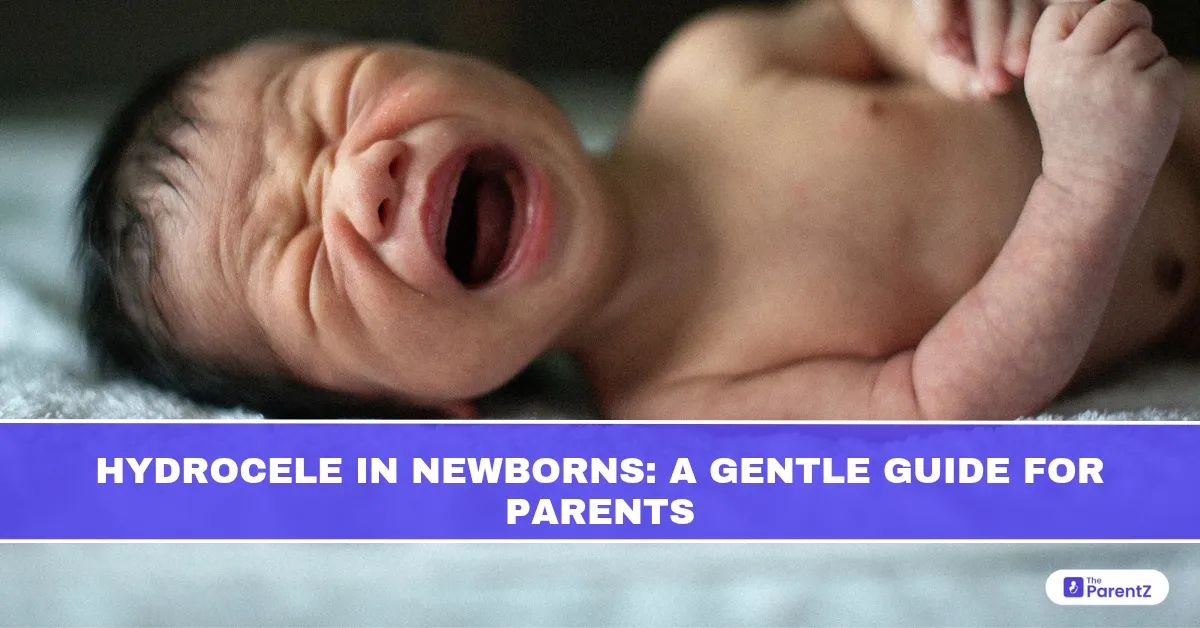As a new parent, every change in your baby’s body can feel alarming, especially when it involves something as delicate as your baby boy’s scrotum. One such concern is hydrocele, a condition that may appear as swelling or puffiness in the scrotum, often noticed soon after birth.
The good news is that hydrocele is usually harmless and painless, and in most cases, it resolves without treatment. But understanding what it is and when to act is key to peace of mind and proper care.
What Is a Hydrocele?
A hydrocele is a fluid-filled sac around a testicle that causes scrotal swelling. It’s common in newborn boys and typically doesn’t cause pain or long-term issues.
The scrotum may appear:
- Puffy or swollen
- Larger on one side
- More prominent during the day or when the baby cries or strains
Most hydroceles are non-communicating and resolve naturally within the first 6 to 12 months of life.
Why Does a Hydrocele Occur in Newborns?
To understand hydrocele, it’s helpful to know a bit about fetal development.
During pregnancy:
- A baby’s testicles develop inside the abdomen and descend into the scrotum through a passage called the inguinal canal.
- Along with the testicles, a small amount of abdominal fluid may travel down into the scrotum.
- Normally, the canal closes shortly before or after birth, sealing off the fluid.
But if the canal remains open or closes slowly, fluid gets trapped, causing a hydrocele.
Types of Hydrocele
- Non-communicating Hydrocele
- Communicating Hydrocele
How to Recognise a Hydrocele in Your Baby
Parents or pediatricians may notice:
- Smooth, soft swelling in one or both sides of the scrotum
- Scrotum looks larger during crying, straining, or in the evening
- Swelling is not painful or tender
- Light shines through the swelling (positive transillumination test)
A hydrocele is different from a hernia, which may contain intestines and can cause pain or become dangerous.
When Should You Be Concerned?
Hydroceles are usually harmless, but seek medical attention if you notice:
- Swelling that becomes suddenly hard or painful
- Redness or warmth over the area
- Baby is irritable, vomiting, or refusing feeds
- Scrotal swelling that grows quickly or appears alongside a groin bulge
These could signal an inguinal hernia or infection, which requires urgent care.
Diagnosis and Evaluation
Your pediatrician will typically diagnose a hydrocele through physical examination.
In some cases, a scrotal ultrasound may be done to:
- Confirm the diagnosis
- Rule out inguinal hernia or other scrotal conditions (like testicular torsion)
Treatment: Observation or Surgery?
For Non-Communicating Hydroceles:
- No treatment is usually needed
- Most resolve by 12–18 months of age
- Regular follow-up to monitor size and changes
Surgical Procedure:
- Performed under general anesthesia
- Small incision made in the groin to close the open passage
- Day-care surgery in most cases
- Babies recover quickly with minimal discomfort
Hydrocele vs. Hernia: How to Tell the Difference
| Feature | Hydrocele | Inguinal Hernia |
| Content | Fluid | Intestines or fat |
| Swelling | Soft, smooth, often fluctuant | May be firm, irregular, reducible |
| Pain | Painless | Can be painful or tender |
| Change with strain | May enlarge slightly | Enlarges significantly |
| Risk | Rarely serious | Can become incarcerated/strangulated |
| Treatment | Often resolves on its own | Requires surgery |
If you’re unsure, a pediatrician will help distinguish between the two through clinical assessment.
Emotional Reassurance for Parents
It’s completely normal to feel worried when you see swelling in your baby’s groin area. But remember:
- Hydroceles are common and usually benign
- The majority resolve without intervention
- Regular check-ups are enough in most cases
- If surgery is needed, it is safe and effective
You’re not alone; many parents have walked this path. Open conversations with your pediatrician can bring clarity and confidence.
Final Thoughts: Gentle Monitoring Is Key
Hydrocele in newborns is often more alarming in appearance than in actual danger. Still, it’s wise to stay observant, especially if the swelling persists or changes.
By being aware, attending regular pediatric check-ups, and trusting your instincts, you can ensure your baby receives the best care, whether that means simple monitoring or timely surgical intervention.
Your baby’s comfort, growth, and happiness are what matter most, and with knowledge in hand, you’re already doing wonderfully as a parent.








Be the first one to comment on this story.